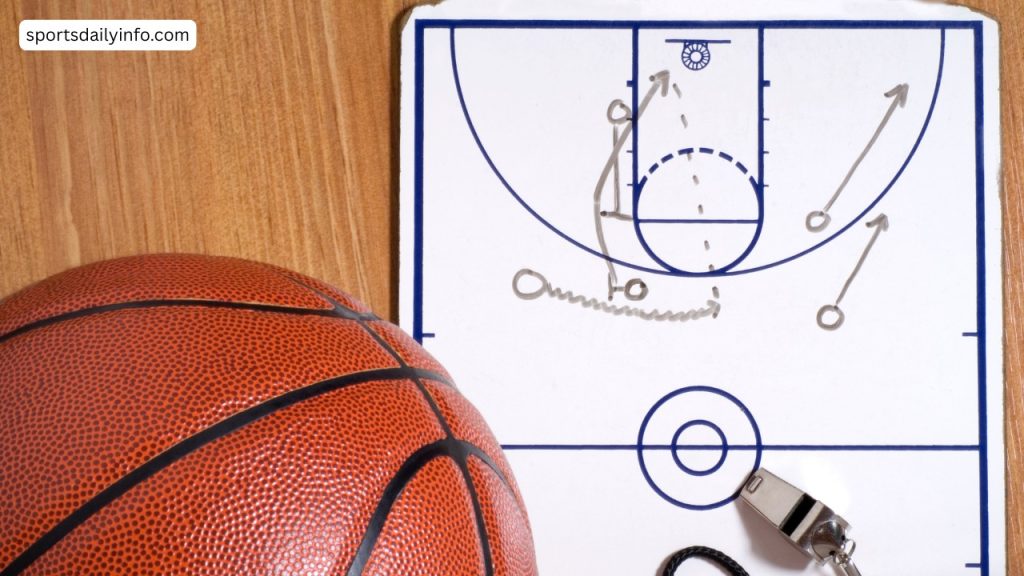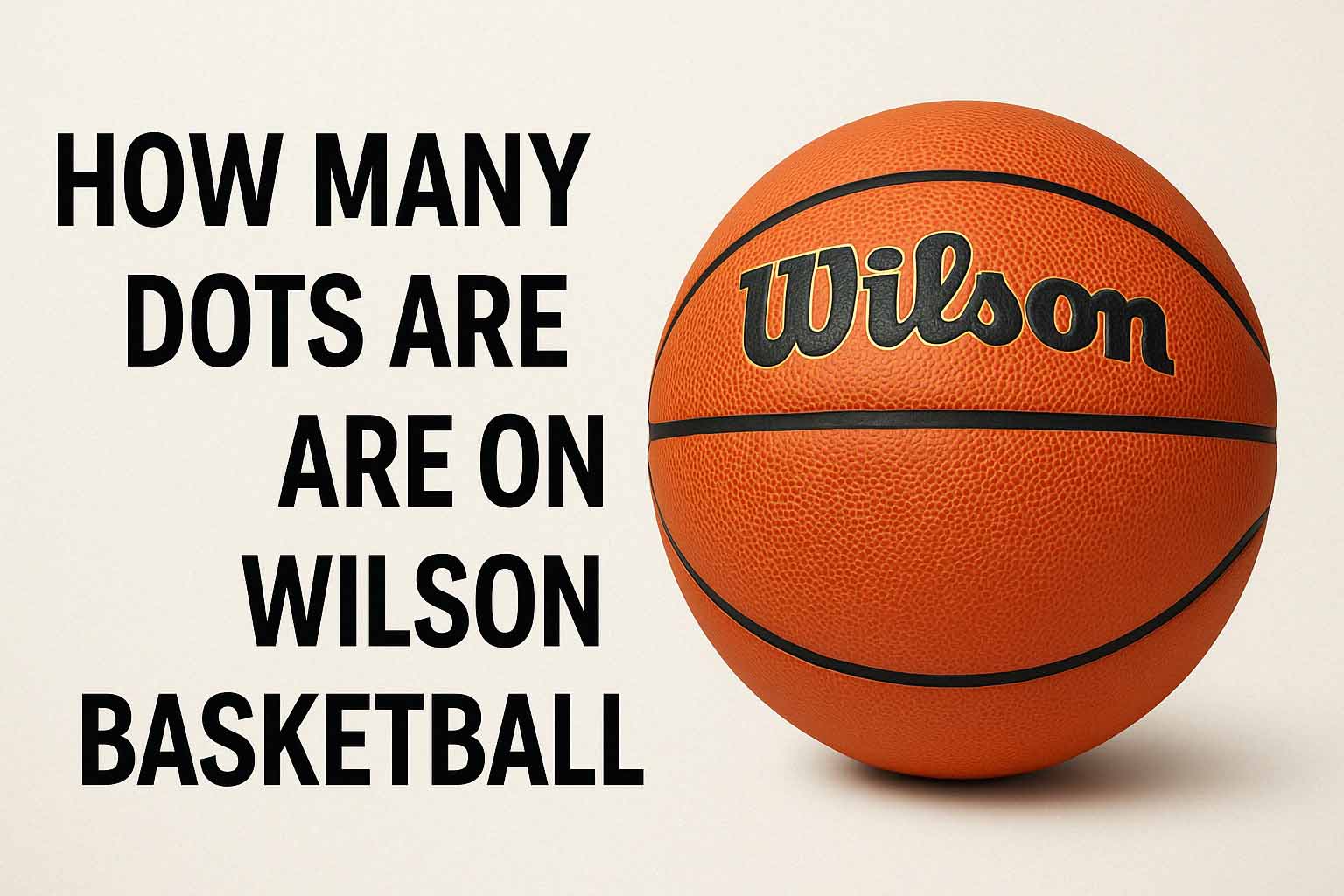As someone who’s followed international basketball for over a decade—watching players like Luka Dončić evolve from teenage prodigies in Europe to MVP contenders in the NBA—I’ve always been fascinated by the different ways basketball talent is developed around the world. What especially caught my attention is how European coaches consistently mold fundamentally sound, high-IQ players who thrive in structured systems.
Now, if you’ve ever asked yourself, “How do European coaches develop basketball players so effectively?”, you’re not alone. In fact, that very question has come up repeatedly in forums, interviews, and scouting reports. While the American system often emphasizes athleticism and individual highlights, the European approach leans into tactical discipline, core fundamentals, and basketball IQ—and it’s paying off on the global stage.
This article is your inside guide to the European basketball development model. I’ll walk you through how these coaches approach player training, what makes their philosophy unique, and why European academies continue to produce some of the most complete players in the world today.
Along the way, I’ll also include some helpful tables that show side-by-side comparisons of development models and training routines across Europe, so you can clearly see what makes their system work.
Ready to take a courtside seat into the world of European basketball development? Let’s dive in.

Contents
- 1 The European Basketball Coaching Philosophy
- 2 Player Development Framework Across Europe
- 3 Structured Training Methods and Weekly Routines
- 4 Importance of Early Exposure to Team Play and Basketball IQ
- 5 Role of Coaches and Institutions
- 6 Comparison With the American System
- 7 Case Studies of Successful European Players
- 8 Future Trends in European Basketball Coaching
- 9 Final Thoughts
- 10 FAQ: How European Coaches Develop Basketball Players
The European Basketball Coaching Philosophy
When I first started watching European basketball closely, I noticed something very different right away. Players weren’t just running fast or jumping high—they were reading the floor, making smart passes, and taking high-percentage shots. It felt more like chess than a dunk contest. And that’s no accident.
European coaches build players from the ground up. They focus on fundamentals, not flash. Things like footwork, passing, shooting form, and court awareness are drilled early and often. Instead of designing plays for one star, they teach team-first basketball where everyone knows their role and the ball moves with purpose.
I’ve seen young players in Serbia, Spain, and Lithuania running the pick-and-roll with more precision than some college players in the U.S. That’s because the coaching philosophy in Europe puts a big focus on basketball IQ. Coaches break down the game into small decisions—when to cut, when to help, when to pass—and train those choices through repetition.
It’s not just about practice either. European teams often play in structured systems, especially at the youth level. These systems teach players how to read defenses, space the floor, and play within a unit. Unlike in the AAU system in the U.S., where raw athleticism can mask flaws, European leagues push young players to rely on skill and smarts.
That’s why when a player like Nikola Jokić enters the NBA, he already knows how to move the ball, position himself on defense, and make his teammates better. He’s a product of a philosophy that values development over showmanship.

Player Development Framework Across Europe
What really sets Europe apart is how consistent their development system is across countries. Whether you’re looking at Spain’s ACB league, Serbia’s Red Star system, or France’s INSEP academy, one thing is clear: they follow a long-term development model.
In my experience, players are developed in age-based stages. Coaches introduce new skills at each stage based on physical and mental growth. Kids start with ball-handling, passing, and shooting basics. As they get older, they move into more advanced things like defensive rotations, off-ball movement, and tactical decision-making.
What’s really interesting is how much responsibility local basketball clubs take in this process. Unlike in the U.S., where many players rely on school teams or AAU tournaments, European clubs offer structured coaching from age 6 and up. These clubs follow something similar to the LTAD model, which stands for Long-Term Athlete Development. It’s a system that grows players step by step, rather than rushing them into high-stakes games.
National basketball federations also play a big role. Countries like Lithuania and Germany invest in coaching certification programs, consistent training guidelines, and even youth competitions run by FIBA Europe. This creates a clear path from local gym to national team.
Here’s a helpful comparison of how different countries approach development:
Comparison of Player Development Models in Countries like Spain, Serbia, France, Lithuania, and Germany
| Country | Age to Start Training | National Federation Support | Club Involvement | Focus Areas |
| Spain | 6–7 years | Strong (via FEB) | High | Shooting, Movement |
| Serbia | 6–8 years | Moderate to Strong | Very High | IQ, Passing, Defense |
| France | 7–9 years | Very Strong (INSEP) | Moderate | Athleticism, Discipline |
| Lithuania | 6 years | Extremely Strong (LKF) | High | Technique, Court Vision |
| Germany | 8–10 years | Strong (DBB) | Moderate | Physical Training, Tactics |
This model ensures that by the time players are 18, they’ve had over a decade of structured, purposeful coaching. That’s why so many of them arrive in the NBA not just ready to play—but ready to win.
Structured Training Methods and Weekly Routines
When I first visited a European basketball academy in Spain, I was surprised by how organized everything was. From warm-ups to scrimmages, each drill had a purpose. And no session felt wasted. That’s a key reason why European basketball training methods are so effective.
Unlike many youth teams I’ve seen in the U.S. that rely on generic drills, European academies build training around the player’s long-term growth. Each week follows a clear plan. Players work on individual skills, like shooting or footwork, alongside team tactics like help defense or transition plays.
Most academies stick to a weekly training model. It balances fundamental development with game situations. Sessions are often split into short blocks—15 to 30 minutes per skill—with time left for small-sided games or film review.
One thing that stands out is how much coaches care about details. They break down basketball drills into small parts. For example, instead of just running a fast break, they’ll focus on how to pass the ball in stride or finish with contact at the rim. It’s about making every rep count.
And the pace? It’s fast, but controlled. Players are pushed to train with purpose—something I noticed across top clubs like Real Madrid, ASVEL, or Žalgiris Kaunas. They’re not just running around. They’re learning how to think the game while they move.
Here’s what a typical week looks like for a U16 player in a European academy:
Sample Weekly Training Routine of a U16 Player in a European Academy
| Day | Morning Session | Afternoon Session | Focus Area |
| Monday | Skill drills (shooting) | 3v3 games + recovery | Individual technique |
| Tuesday | Strength & conditioning | Pick-and-roll scenarios | Physical + tactical work |
| Wednesday | Off-ball movement drills | Team scrimmage + film review | Spacing and IQ |
| Thursday | Passing + footwork combo | Zone defense breakdown | Fundamentals + tactics |
| Friday | Ball handling + shooting | Full-court transition drills | Speed + decision-making |
| Saturday | Game simulation drills | Team video study | Match prep and awareness |
| Sunday | Rest or light shooting | Mental training (visualization) | Recovery and mindset |
This kind of structure helps players get better in every part of the game—step by step, day by day.
Importance of Early Exposure to Team Play and Basketball IQ
One thing that really makes European coaching stand out is how early they introduce team play. I’ve seen kids as young as 9 running proper half-court sets and talking through help-side defense. It’s no surprise that European players often have a higher basketball IQ when they reach the pro level.
From day one, coaches teach players how to make smart decisions on the court. That means knowing when to pass, when to cut, and when to rotate on defense. It’s not about memorizing plays—it’s about reading the game. This style helps young players learn how to think two steps ahead.
In many programs, coaches use small-sided games (like 3v3 or 4v4) to teach these concepts. These games force players to make fast choices with fewer people on the floor. It’s a great way to build instincts and on-court awareness.
Another method I love is guided discovery. Instead of telling a player what to do, coaches ask questions. Like, “What did you see on that play?” or “Where was the open space?” It helps players develop a deeper understanding of the game, which is more useful than just memorizing drills.
Even at higher levels, coaches in Europe keep reinforcing these habits. They use video analysis tools like Hudl or Instat to break down plays and teach positioning. So by the time a player reaches the U18 or pro level, they already know how to adjust to different defenses, make fast reads, and contribute to a team system.
This mindset—“think before you act”—is one of the biggest reasons why European basketball IQ training is so respected around the world.
Role of Coaches and Institutions
In Europe, coaches are more than just practice leaders. They’re mentors, teachers, and system builders. I’ve met coaches in Serbia and Spain who have worked with the same group of players for 5 to 10 years. They don’t just teach basketball—they shape how young athletes grow on and off the court.
What makes them different is the level of training and certification they receive. Most coaches go through structured programs set by FIBA, the international governing body of basketball. These programs focus on player development, sports psychology, injury prevention, and tactical analysis. It’s not a one-time license either. Coaches often continue learning through FIBA’s Coach Academy, clinics, and local seminars.
I’ve sat in on a few of these clinics, and they’re no joke. The focus is on long-term success, not short-term wins. Coaches learn how to track player growth, break down performance with data, and adapt training to suit different age groups. That’s why European coaching certification systems are considered some of the best in the world.
On top of that, national basketball federations provide major support. Organizations like the Spanish Basketball Federation (FEB), German Basketball Federation (DBB), and French Federation (FFBB) fund youth programs, organize leagues, and help maintain a high standard of coaching. These federations also work closely with clubs and schools to ensure kids have access to courts, coaches, and resources.
Clubs themselves play a huge role too. Take ASVEL Basket in France or Žalgiris Kaunas in Lithuania—these clubs run full-time youth academies. Kids get schooling, meals, physical training, and basketball lessons under one roof. It’s a model built for sustainable player development, not just flashy results.
This team effort—from certified coaches to national systems—is a big reason why Europe continues to produce smart, skilled players who are ready for any league in the world.
Comparison With the American System
Whenever people ask me about the difference between the European and American basketball systems, I always say this: Europe builds thinkers, while the U.S. builds highlight reels. And both have their strengths.
In the U.S., many players come up through AAU basketball, which is a tournament-based system that runs all year. It gives exposure, especially for college scholarships. But sometimes, the focus shifts too much toward athleticism and individual performance, rather than team concepts or long-term skill development.
In contrast, European players grow within club systems. These clubs often compete in professional leagues even at the youth level, giving players early exposure to structured team play. There’s less emphasis on showing off and more on basketball fundamentals, positioning, and decision-making.
Take Luka Dončić, for example. Before he turned 18, he was already playing for Real Madrid’s senior team. His development included team tactics, mental discipline, and film study. When he entered the NBA, he was ready. He wasn’t just athletic—he was prepared to lead.
That said, the U.S. system does have its advantages. Facilities are world-class, and competition is fierce. Plus, top college programs like Duke, Kentucky, or Gonzaga offer great coaching and global exposure. But the U.S. often relies on natural talent to carry players through, which sometimes leaves gaps in basketball IQ and fundamentals.
Interestingly, I’ve seen more American coaches and teams adopting European methods in recent years. Some youth programs now use small-sided games, zone concepts, and even positionless basketball—all ideas that Europe embraced long ago. The NBA’s Basketball Without Borders initiative is also helping spread global coaching wisdom.
So which is better? Neither. But if you’re looking for well-rounded player development, Europe’s system offers more structure, more mentorship, and a long-term vision that pays off.
Case Studies of Successful European Players
When I look at how European coaching systems shape players, three names always come to mind: Luka Dončić, Nikola Jokić, and Giannis Antetokounmpo. Each of them took a different path, but they all share one thing—a foundation built on structure, skill, and basketball IQ.
Let’s break it down:
Player Case Studies – Luka Dončić, Nikola Jokić, Giannis Antetokounmpo
| Player | Country | Early Club/Academy | Notable Training Focus | NBA Entry Age |
| Luka Dončić | Slovenia | Real Madrid (Spain) | Court vision, IQ, spacing | 19 |
| Nikola Jokić | Serbia | Mega Basket | Passing, positioning | 20 |
| Giannis Antetokounmpo | Greece | Filathlitikos | Physical dev., versatility | 18 |
Luka Dončić trained with Real Madrid from the age of 13. While most teens are still learning how to dribble under pressure, Luka was mastering pick-and-roll reads and spacing strategies. By the time he entered the NBA Draft, he already had EuroLeague MVP under his belt.
Nikola Jokić, on the other hand, had a slower start. He was a bit overweight and didn’t look like a future star. But Serbia’s club system at Mega Basket nurtured his talent with a focus on passing, decision-making, and high-IQ offense. Today, he’s a two-time NBA MVP and known for his unselfish play.
Then there’s Giannis Antetokounmpo, who started in a much different environment. He played in a small gym in Greece, where he had limited access to top-level coaching early on. But his coaches worked on his core movement skills and helped him understand spacing and defense. As his body grew, so did his game. With the right support, he went from unknown to NBA champion and MVP.
Each player followed a slightly different path, but all had access to development-focused coaching, clear systems, and mentorship from a young age. These case studies show how powerful the European model can be when it’s done right.
Future Trends in European Basketball Coaching
Over the last few years, I’ve seen European coaching systems evolve faster than ever before. With new tools, data, and international competition, the future of basketball development looks bright—and smarter.
One big trend is the use of sports science. European academies are investing in performance tracking tools that measure movement, heart rate, and shot accuracy in real time. This allows coaches to adjust training based on how the player feels and performs. It also helps prevent injuries by balancing workloads.
Another growing focus is mental training. Some clubs are now hiring sports psychologists to teach players focus, confidence, and decision-making under pressure. Programs like FIBA’s Mental Skills Coaching help coaches add mindset-building to their routines. This is especially useful during stressful games or recovery periods.
Then there’s technology—and I don’t just mean video replay. More clubs are using tools like Noah Basketball and ShotTracker to improve shooting mechanics. Others use virtual reality (VR) to simulate game scenarios and train decision-making off the court.
I’ve also noticed a rise in cross-border academies. These are programs that mix coaching styles from different countries. For example, some German clubs are now adopting Serbian drills, while French teams study Spanish team concepts. This exchange of ideas is making players more well-rounded than ever.
Lastly, the global success of players like Giannis, Doncic, and Jokić has sparked interest from all over. More young players are now enrolling in European basketball academies, even if they live outside of Europe. It’s turning local systems into global hubs of talent.
Final Thoughts
After years of watching and learning from European coaches, I can say this with full confidence: Europe doesn’t just create basketball players—it builds complete athletes.
The system works because it focuses on the whole player. From teaching footwork at age 6 to building mental toughness at age 16, the process is slow, structured, and smart. It’s about progress, not just points.
Whether you’re a parent looking to support your child’s basketball journey or a coach wanting to learn new methods, there’s a lot to take away from Europe’s approach. The use of fundamentals, the importance of basketball IQ, and the value of team play are lessons that work anywhere in the world.
And if you’re a player? Study how these systems operate. Watch European games. Learn from how the pros move, pass, and think. Trust me—adding a bit of European discipline to your game can be the edge you need.
FAQ: How European Coaches Develop Basketball Players
Q1: What is the main difference between European and American basketball coaching?
The main difference is the focus. European basketball coaching emphasizes fundamentals, team play, and basketball IQ from a young age. Coaches build players through structure and repetition. In the U.S., the focus often leans toward athleticism and individual performance, especially in systems like AAU basketball.
Q2: At what age do European players start structured basketball training?
Most kids in Europe start structured basketball training between the ages of 6 and 8. They usually join a local basketball club, where they train under licensed coaches using age-appropriate drills and techniques. These clubs often follow the Long-Term Athlete Development (LTAD) model to build skills over time.
Q3: Are European basketball academies open to international players?
Yes, many top academies in Europe accept international players. Clubs like Real Madrid, ASVEL, and Stellazzurra Basketball Academy offer full development programs. Some even provide housing, education, and language support. These programs attract talent from all over the world looking for skill-based development and a pathway to professional leagues or the NBA.
Q4: How important is coaching education in Europe?
It’s extremely important. Coaches in Europe often need certifications from their national federations or through the FIBA Coaching Academy. These programs cover player development, sports science, psychology, and more. Continued education is also encouraged, making sure coaches stay up to date with new techniques and methods.
 Sports Daily Info All Things Sports, from News to Match Schedules
Sports Daily Info All Things Sports, from News to Match Schedules



